According to the U.S. Department of Agriculture, roughly 15 billion bushels of corn are grown in an average year in the U.S. Since it takes 26 pounds of corn to make 1 gallon of ethanol, over 5 billion bushels of that corn are grown just to make this fuel additive. The U.S. produces roughly one-third of corn grown worldwide.
Why is this important, you ask? Because that’s a lot of corn that isn’t going to feed people or livestock.
Brazil and the U.S. account for about 87% of the over 28 billion gallons of ethanol produced each year. For the most part, the U.S. uses corn and Brazil uses sugarcane. Either way, this is land not being used to produce food. In addition, soy is increasingly being used as a petroleum substitute for manufacturing including making lubricants and tires.
You can certainly make the case that moving away from petroleum may be a good thing, but it still means less and less land used for growing food.
You’ve probably seen the predictions that the world population will exceed 9 billion people by mid-century. That’s a lot of mouths to feed and the demand for food will be astronomical, especially when there are more and more demands on agribusiness to produce crops for non-food purposes like ethanol, industrial oils and biodegradable products such as packaging.
Productive Land Becoming Scarce
There are basically two types of land used to produce food and fiber; arable land (for crops that are replanted after each harvest, such as vegetables and commodity crops like rice, wheat and corn) and permanent cropland (this includes vines, fruit and nut trees).
Cultivated land is the sum of both arable and permanent cropland. About 11.6% of all land on the planet is available for cultivation. That doesn’t seem like much, does it? We reached a peak between 1998-2001 when we hit 4.88 hectares per person and have been slowly going down ever since.
Put another way, the number of arable hectares per person, as measured by the World Bank, has gone from .361 in 1961 to .184 in 2018. That .127 hectare per person reduction over the last 6 decades is a plunge of almost 50%! In other words, we are now using literally half of the land to produce more and more food.
Some of the reasons for this are due to desertification and growing urban areas. Additionally, in some parts of the world wars and narco-traffickers have made it near impossible to engage in farming. Climate change is also having an impact. And, as noted above, some of the coming food shortage will be due to the increased use of productive land for non-food agriculture.
The good news is that farmers (and agribusiness in general) have innovated to keep up with the mushrooming demand for food. As our populations have increased, the farm community has responded through new crop genetics and the employment of greater technology to produce more food on less land. Nonetheless, the challenge is daunting. Some have compared the task to having to feed 2 more Indias in the next few decades.
And What About Water?
Add to that the fact that the world is rapidly running out of fresh water and we’ve got a real problem. Now, obviously, we are not literally running out of water. After all, the earth is a closed system and water isn’t floating off into space. No, the problem is having sufficient, useable water in the places it’s needed the most.
There are already places in the world where sparkling brooks flow into larger streams that feed into major rivers that literally disappear before reaching the ocean because so much water is siphoned away for human consumption and farm irrigation. In China alone, 28,000 out of 50,000 rivers have dried up in the last 20 years, largely from agricultural diversion.
In North America there are two significant examples; the Colorado River and the Rio Grande. In wet years, both rivers flow all the way to the ocean but in dry years, which is becoming the norm, the river beds end in dry sand and dust.
Drip irrigation systems used in greenhouses and increasingly in open-field production can reduce agricultural water consumption by more than 50%. Greenhouses can further reduce water consumption through recycling processes. These solutions provide opportunities for those savvy enough to recognize them.
Farmland Belongs In Every Portfolio
Demand is going to outstrip supply. Whether the world’s agricultural producers can provide sufficient supplies or not, the demand will go through the roof. Savvy investors are already buying up farmland as fast as they can get their hands on it (see Do you have something in common with Bill Gates?). China is aggressively buying farmland in Asia, Africa and the Americas.
The word is out; the world’s population is ever-expanding, farmland scarcity is real, we need more food and the smart money is getting in line to both make money and be a part of the solution. What about you? The slogan at Alternative Ag Investors is “Passive Income From Farmland Ownership.” Will you join me?


